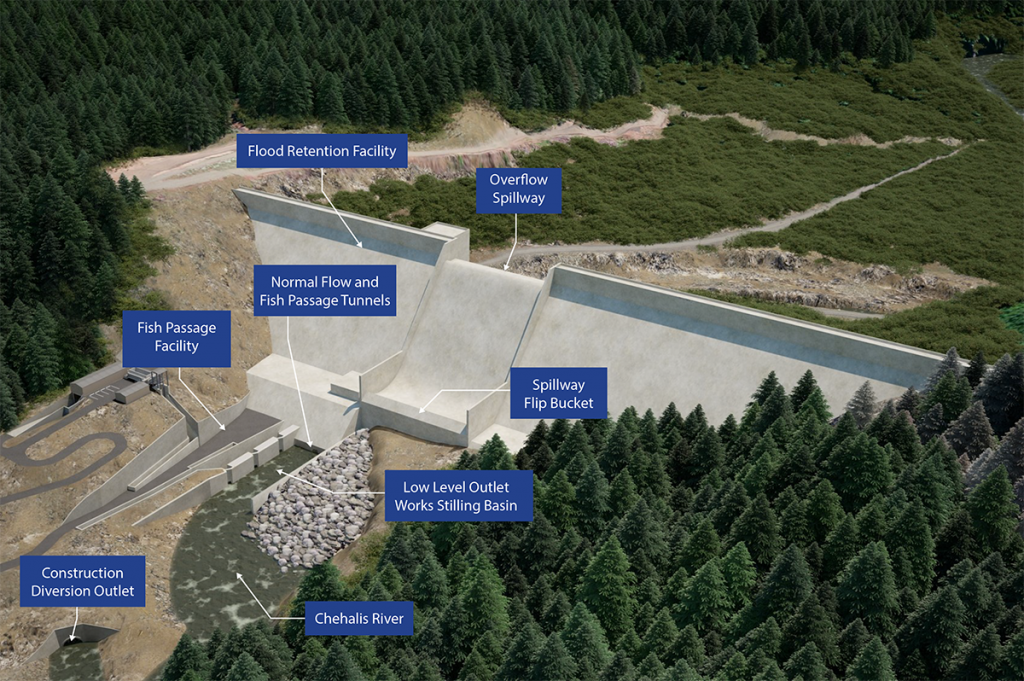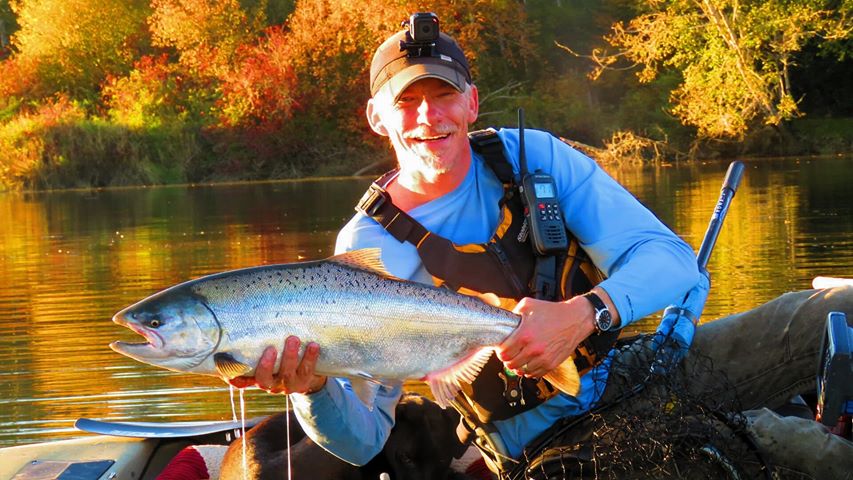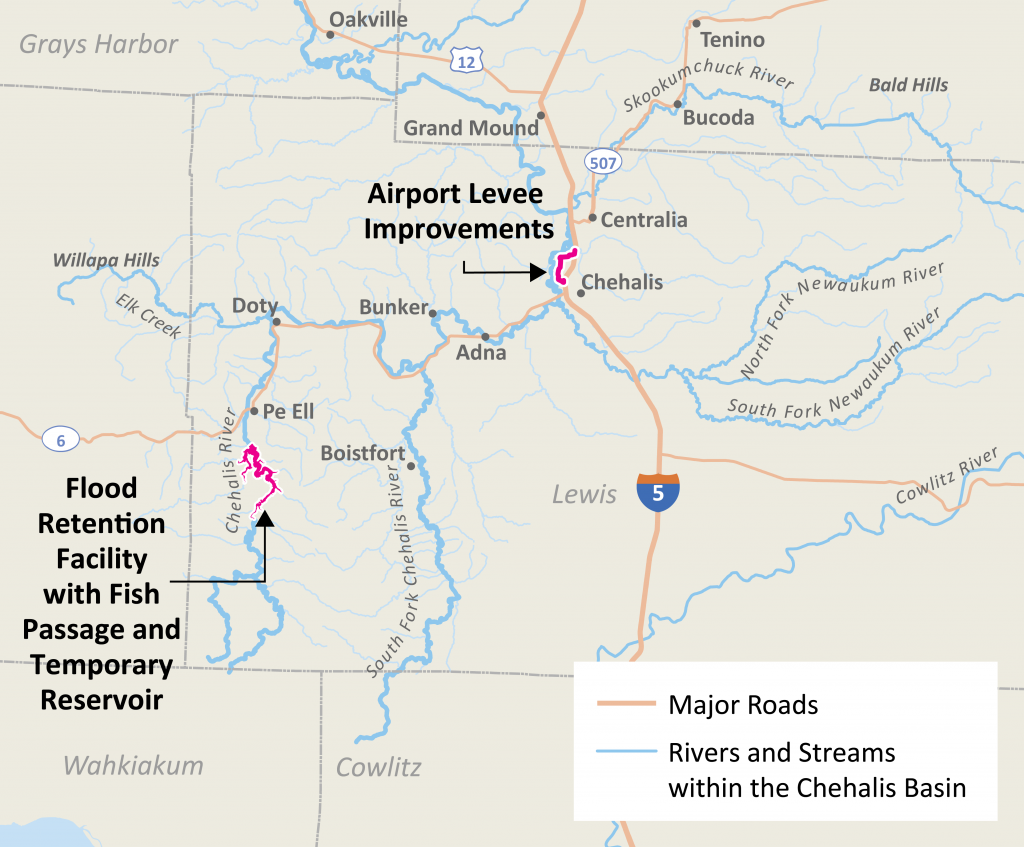
Inslee Pauses Chehalis Dam EIS Work, Asks For No-dam Alternative to Be Developed
Governor Jay Inslee has paused work on an environmental impact statement for a flood-control project on the upper Chehalis River and directed that a no-dam alternative be developed, “a major shot over the bow for the proposal.”

In July 22 letters to the heads of the Washington Departments of Fish and Wildlife, and Ecology, as well as the Chehalis Basin Board, the governor wrote that reviews have produced “additional and significant questions and concerns about impacts and alternatives.”
Comment on the projects draft EIS, which includes levee improvements behind Home Depot and Walmart in Chehalis, closed in late May.



“I have requested that the Chehalis Basin Board provide recommendations on the process for addressing some of these concerns, particularly the development of a basin-wide, non-dam alternative to flood damage reduction and evaluating the potential to avoid, minimize, and mitigate the impacts of the flood retention and other flood risk reduction projects,” Inslee wrote and directed WDFW and DOE to help on the non-dam option.

There have been concerns about the impact a 1,200-foot-wide dam upstream of Pe Ell would have on Chinook, coho and winter steelhead when the land behind it is temporarily filled to its 863-acre capacity during heavy rainstorms.
Sportsman Chase Gunnell of Conservation Northwest called Inslee’s project pause “a major shot over the bow for the proposal to dam one of Washington’s best salmon and steelhead rivers.”
His organization’s local coordinator Brian Stewart expressed skepticism that the dam could be built with irreversible impacts to fish and wildlife, their habitats and migratory corridors.
Stewart instead called for restoring floodplain forests to soak up high flows, designating some areas for intentional flooding and paying fair market value to move willing property owners out of low points.
With Covid-19’s impacts on state coffers, that last one might be down the road, but that’s also where the governor is looking.
“Given that climate change poses a significant risk to salmon and increased flood damage in the basin, I believe that we will need the best scientific evaluation of options to preserve habitat and restore salmon runs while protecting the basin’s human communities. Therefore, I support both agencies’ continued participation in the Chehalis Basin Strategy’s related work to assess options for mitigation and ecological restoration,” Inslee wrote to WDFW and DOE.
He also asked both agencies to begin consultations with local tribes and figure out ways to engage them on analysis and other work.
The Quinault Nation has worried about groundwater impacts and the potential for more slides at the dam site, and that future flooding will be worse than modeled, according to a recent article by Hakai Magazine.


“Because of these overwhelming shortcomings, the only reasonable and legally justifiable next step for the state is to deny the proposed project,” the Quinault Nation concluded in a May 2020 statement, Hakai reporter Larry Pynn wrote.

Chehalis floodwaters have closed I-5 at least three times since 1996, including for four days in December 2007. The basin – just like every single one up and down the West Coast – is flood prone as fall and winter atmospheric rivers stream in off the Pacific.
But according to the Chehalis River Alliance, it’s become worse in recent years “due to a combination of climate change and 150 years of human development that has dramatically impaired the basin’s ability to handle major flood events.”
Fisherman Greg King of Toledo and the late Brian Oldfield, a longtime Chehalis Basin fishing guide, teamed up to write an op-ed in April, questioning the cost of the dam and its effectiveness if it only reduced I-5 closures to a day instead of multiple days.
“Dams aren’t always bad; they can provide clean renewable energy and recreation,” King and Oldfield wrote in the Centralia Chronicle. ahead of a public hearing that was to be held virtually. “This dam would do neither. As taxpaying residents of this basin, we want to make sure that our money will be well spent on thoughtful, long-term solutions to flooding and salmon declines; solutions like smarter floodplain development and highway raising. And as passionate fishermen and river guides, we want to make sure that our precious remaining wild steelhead and salmon habitat will be protected.”
Olympia-based filmmaker Shane Anderson of Pacific Rivers, who recently released a documentary on the Chehalis, was encouraged that Inslee asked for a non-dam option.
“The EIS was pretty clear that the dam would have irreparable harm to wild salmon and steelhead populations at a time when escapements have been down and fisheries closed in recent years,” he said.
Since 2014-15’s Blob and successive marine heat waves, many Northwest stocks have been struggling, impacting sport and tribal seasons.
Luke Kelly, Trout Unlimited’s restoration project manager, said his organization applauded Governor Inslee’s request to come up with a different plan for the basin.
“The dam alternative and its impacts has been well-evaluated, and in our estimation, the dam would cause irreparable harm some of the few remaining robust runs of salmon and steelhead in Washington. We support the Governor’s request for more engagement with Tribes, local communities, and all stakeholders within the Chehalis Watershed to forge a path forward using habitat restoration and flood mitigation efforts. We believe this type of effort can and will address the impacts of flooding on the Basin’s communities and also considers the protection and recovery of fish populations in the growing face of climate change.”
